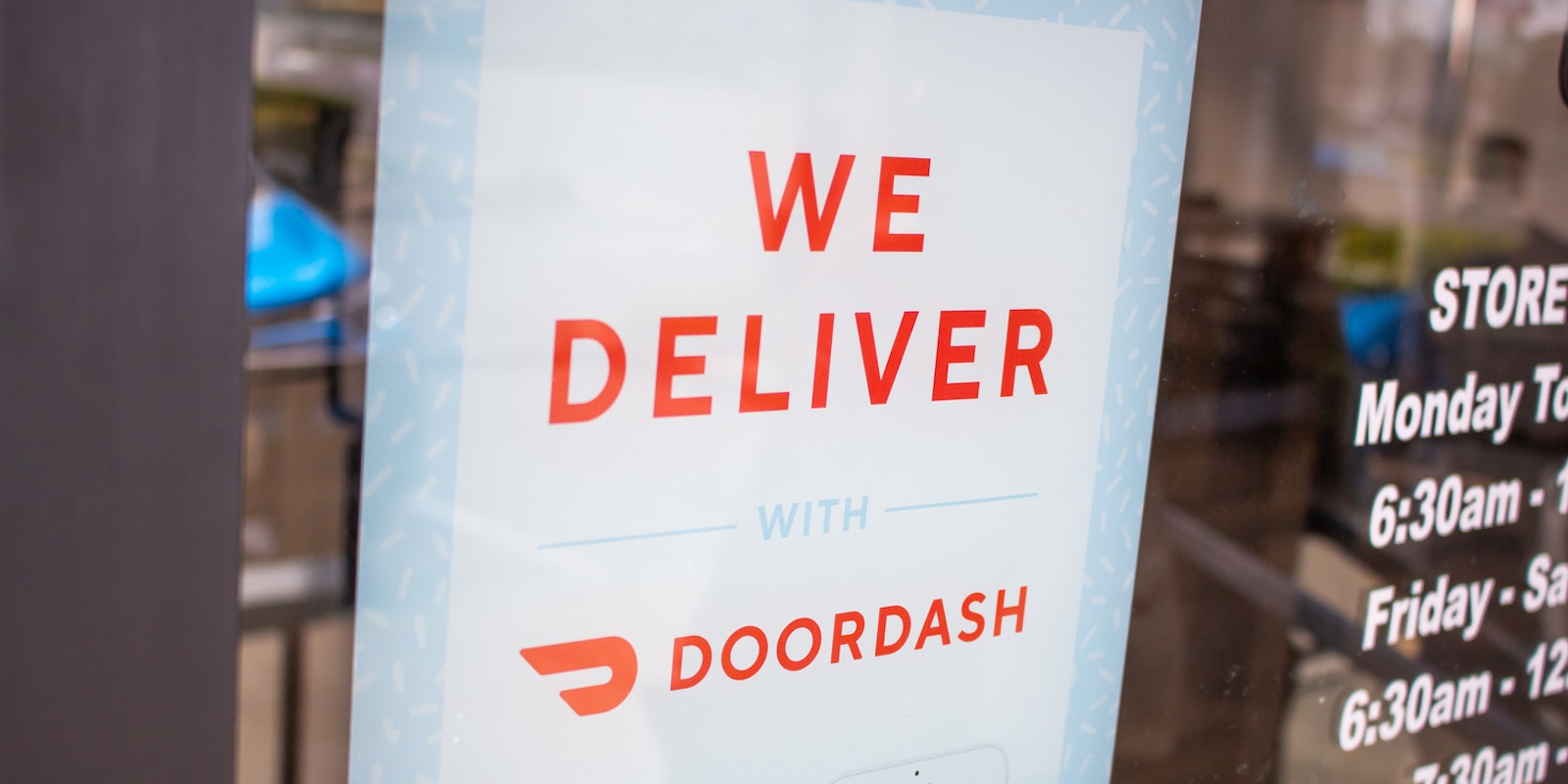Opinion
On Wednesday night, DoorDash CEO Tony Xu announced that the company will begin doling out tips in full and in addition to its delivery workers’ wages. Earlier this year it was found the company would sometimes use customers’ tips to pay its workers their guaranteed money instead of regarding it as an actual tip. DoorDash’s terms of service left enough wiggle room for this policy to squeeze by, but workers and customers felt slighted by the payment model.
In a series of tweets, Xu explained that “after a year of research,” DoorDash came to understand that its users appreciate transparency in where their money is going to and that it will adjust accordingly. Xu did not announce exactly how DoorDash’s system will change, although he noted that “the new model will ensure Dashers’ earnings will increase by the exact amount a customer tips on every order.” (Which, it must be said, is how the concept of tipping works.)
DoorDash is hardly the only gig economy startup to come under fire for shady practices. The delivery app market as a whole has generally failed to treat its workers fairly and deal with customers honestly. Up until recently, grocery delivery service Instacart was using a similar “tipping” model as DoorDash; it also changed the policy and now gives tips in full to workers. According to a recent Slate story looking into the details of delivery service tipping policies, it appears that tips to Amazon Flex delivery drivers can still be used to subsidize their guaranteed wages.
While most other delivery apps payout tips in full (not to hark on this point, but again, this means effectively treating tips as tips and not a way to get out of giving workers a base pay themselves), the industry has been plagued by reports of other nefarious practices. It was recently revealed that GrubHub created thousands of websites for restaurants that partnered with the delivery app. These “shadow” sites made it appear to customers they were ordering directly from a restaurant, which helps the business not pay a fee to GrubHub. But orders made via these GrubHub-made pages will result in a commission fee for the restaurant. It’s not only a brutal tactic against small and local businesses that are compelled to use delivery app services despite their consequences, but also what seems like an outright ploy to confuse customers. GrubHub defended the practice, saying it created “microsites” to help its customers, and if they request it, the company will transfer the domains back to them. Of course, that requires they find the site first, and by most accounts, it appears they were not publicized to the businesses in question.
In a May blog post, Harry Campbell (who runs the gig economy blog the Rideshare Guy) wrote about delivery app tipping and how most apps haven’t figured out (or it could be argued, don’t care to figure out) how to effectively enable tipping. “While all services encourage tips—which conveniently doubles as an additional revenue stream—they can’t force it upon [the] customer. No one likes to be forced into gratuities, and customers already see their delivery charges,” Campbell explains. “Seeing two charges in addition to the food charge can’t be good for the customer experience. Customer trust plays into it too. They want to know their tips are going directly to the driver, and incidents like the one with Instacart undercut customer trust. Anecdotal evidence suggests tips are down post-incident.”
All of this is indicative of an intensely competitive and overcrowded market. In 2017, the food delivery services market was valued at more than $81 billion, and it’s only expected to grow. The wealth of options for consumers means that startups need to find a way to rise to the top and also a path toward profitability—even if it comes at the cost of hurting restaurants, undervaluing workers, and misleading customers (whether intending to or not).
Until DoorDash’s new system goes into effect, the best way to ensure workers get a tip in full is to enter “$0” when the app asks how much you’d like to tip and hand them cash instead, or send them money via payment apps like Zelle or Venmo. (Effectively complicating the simplicity of a single app-based, cashless system.) Same goes for Amazon Flex, though the fact that these delivery drivers don’t hand customers their orders makes this decidedly more difficult. There’s also another wrinkle: The food delivery app model also removes restaurant workers from getting tips and can place a larger burden on these businesses. It’s unlikely that everyone who uses Postmates or Seamless will attempt to tip restaurant workers. It seems the convenience of delivery apps and the desire for customer money to go where deserved remain at odds.
READ MORE:
- Report: Grubhub is profiting off fake websites of real restaurants
- The fallacy of Amazon Prime Day: An argument for ignoring it completely
- Uber Eats joins the ranks of bad Pride campaigns
Got five minutes? We’d love to hear from you. Help shape our journalism and be entered to win an Amazon gift card by filling out our 2019 reader survey.


